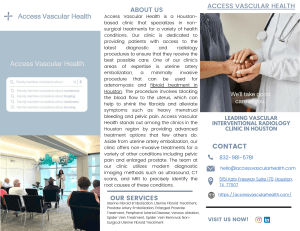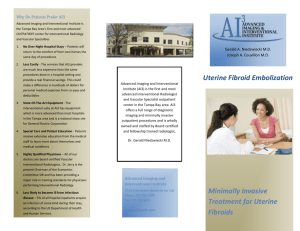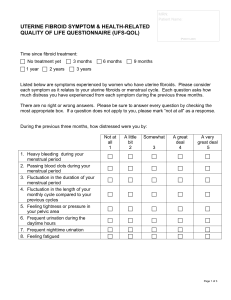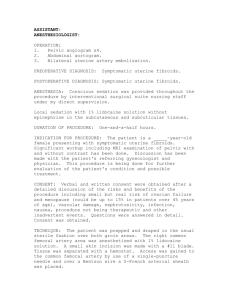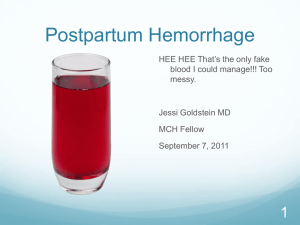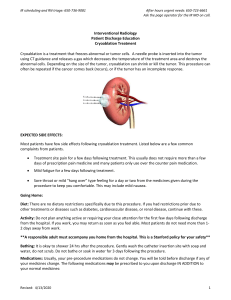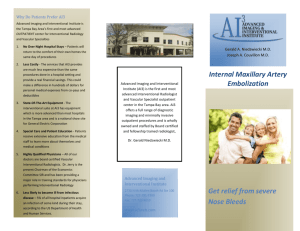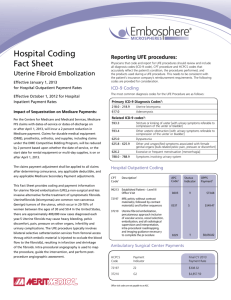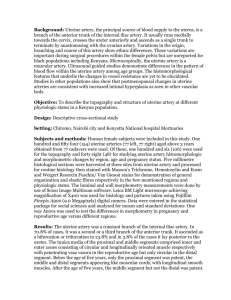Uterine Fibroid Embolization Discharge Instructions
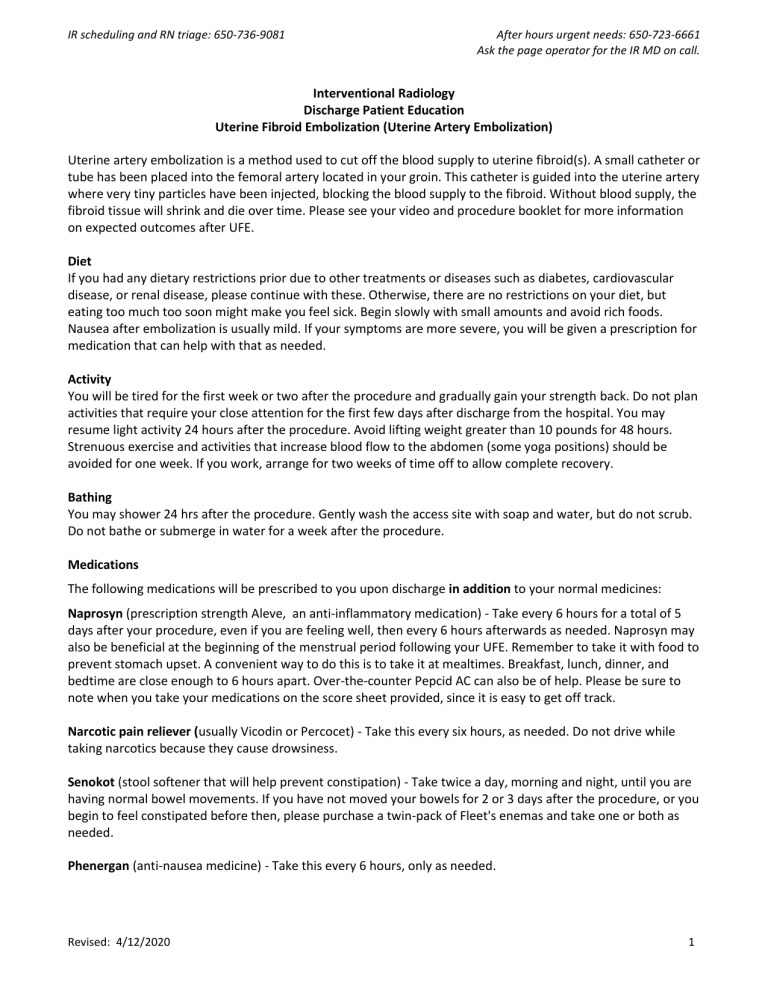
IR scheduling and RN triage: 650-736-9081 After hours urgent needs: 650-723-6661
Ask the page operator for the IR MD on call.
Interventional Radiology
Discharge Patient Education
Uterine Fibroid Embolization (Uterine Artery Embolization)
Uterine artery embolization is a method used to cut off the blood supply to uterine fibroid(s). A small catheter or tube has been placed into the femoral artery located in your groin. This catheter is guided into the uterine artery where very tiny particles have been injected, blocking the blood supply to the fibroid. Without blood supply, the fibroid tissue will shrink and die over time. Please see your video and procedure booklet for more information on expected outcomes after UFE.
Diet
If you had any dietary restrictions prior due to other treatments or diseases such as diabetes, cardiovascular disease, or renal disease, please continue with these. Otherwise, there are no restrictions on your diet, but eating too much too soon might make you feel sick. Begin slowly with small amounts and avoid rich foods.
Nausea after embolization is usually mild. If your symptoms are more severe, you will be given a prescription for medication that can help with that as needed.
Activity
You will be tired for the first week or two after the procedure and gradually gain your strength back. Do not plan activities that require your close attention for the first few days after discharge from the hospital. You may resume light activity 24 hours after the procedure. Avoid lifting weight greater than 10 pounds for 48 hours.
Strenuous exercise and activities that increase blood flow to the abdomen (some yoga positions) should be avoided for one week. If you work, arrange for two weeks of time off to allow complete recovery.
Bathing
You may shower 24 hrs after the procedure. Gently wash the access site with soap and water, but do not scrub.
Do not bathe or submerge in water for a week after the procedure.
Medications
The following medications will be prescribed to you upon discharge in addition to your normal medicines:
Naprosyn (prescription strength Aleve, an anti-inflammatory medication) - Take every 6 hours for a total of 5 days after your procedure, even if you are feeling well, then every 6 hours afterwards as needed. Naprosyn may also be beneficial at the beginning of the menstrual period following your UFE. Remember to take it with food to prevent stomach upset. A convenient way to do this is to take it at mealtimes. Breakfast, lunch, dinner, and bedtime are close enough to 6 hours apart. Over-the-counter Pepcid AC can also be of help. Please be sure to note when you take your medications on the score sheet provided, since it is easy to get off track.
Narcotic pain reliever (usually Vicodin or Percocet) - Take this every six hours, as needed. Do not drive while taking narcotics because they cause drowsiness.
Senokot (stool softener that will help prevent constipation) - Take twice a day, morning and night, until you are having normal bowel movements. If you have not moved your bowels for 2 or 3 days after the procedure, or you begin to feel constipated before then, please purchase a twin-pack of Fleet's enemas and take one or both as needed.
Phenergan (anti-nausea medicine) - Take this every 6 hours, only as needed.
Revised: 4/12/2020 1
IR scheduling and RN triage: 650-736-9081 After hours urgent needs: 650-723-6661
Ask the page operator for the IR MD on call.
Expected Course Of Recovery:
Pain - it is normal to experience crampy abdominal pain for several days after the procedure, similar to an intense menstrual period. Symptoms should respond to Narcotic pain relievers such as Vicodin or Percocet, and a heating pad is also helpful for many women.
Bleeding and Discharge - it is normal to have some bleeding or spotting for a month and occasionally beyond. It is usually much less than before the procedure if your symptom was excessive bleeding. Occasionally you may miss a period for a cycle or two. Please contact us if you have foul-smelling discharge, since this could indicate an infection.
Mild Fever - normal following embolization, but should not be over 101 degrees Fahrenheit. Nausea is also not uncommon for a few days after the procedure. Anti-nausea medication should relieve this.
Follow Up:
Most women do not need a follow up visit in Interventional Radiology after this procedure, but we will be in contact with you several times by telephone during your recovery. Please call us if you are experiencing any unpleasant side effects, especially fever, cramps, abdominal pain and/or vaginal discharge over and above the expected course of recovery side effects previously discussed in clinic or above.
When To Get Medical And Emergency Help
See our contact information below and ask for the on-call fellow:
If you have a temperature over 101
If you have chills, a new cough, or feel weak and achy beyond 1 week of the procedure
If your pain is not controlled
You have questions about your treatment or new prescriptions
Interventional Radiology Contact Information
Office Hours 8:00 am - 4:30 pm
Post procedure questions and Nurse Triage:
Phone: 650-736-9081 Fax: 650-736-7734
Email: irprocedure@stanfordmed.org – non urgent concerns only
For all After Hours Urgent/Emergent issues:
Call the Stanford Page Operator: 650-723-6661
Ask for the IR MD ON Call (pager # 27237)
Revised: 4/12/2020 2
